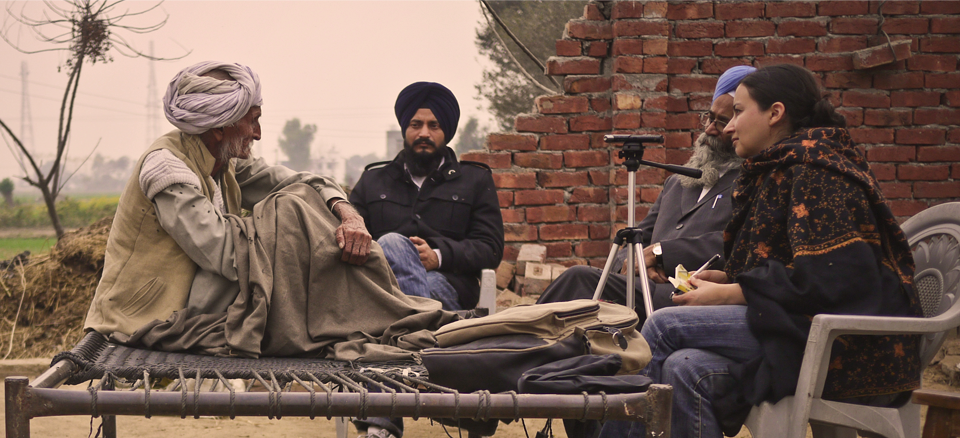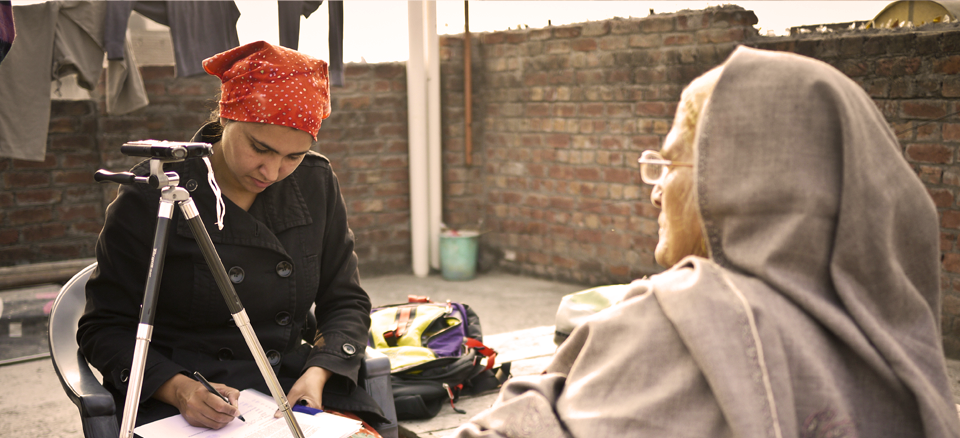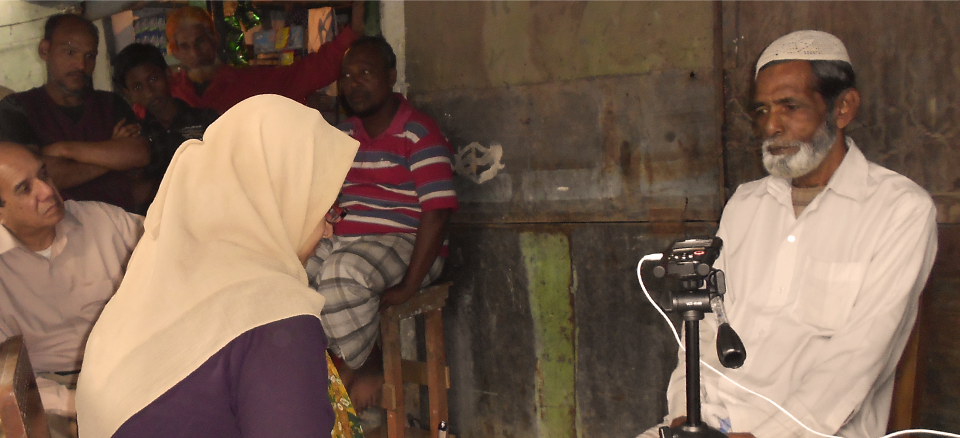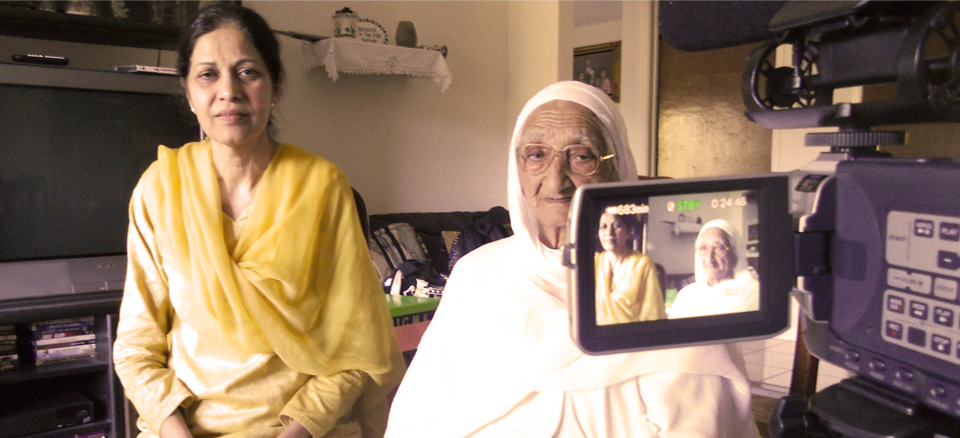
In 1947, Pritpal Kaur was 12 years old when she and her family became part of a mass migration, or rather, a mass displacement, which they had to undergo as a result of the Partition of their nation into two independent countries, India and Pakistan.
This division of the [pullquote align=”right”]This division of the country brought with it some of the worst violence ever seen in the subcontinent.[/pullquote]country brought with it some of the worst violence ever seen in the subcontinent — as more than 12 million people were uprooted from their homes, estimates have put the number of deaths that occurred in this period to be over a million.
But it must be noted that these deaths were just one aspect of the violence that took place during this chaotic time — as this report in The New York Times notes, figures have been hard to come by about the number of rapes, abductions and other crimes that happened in this period.
During their migratory journey from Gujrat in Pakistan to Punjab in India, Kaur remembers the train in which they were traveling being stopped at the railway station in Patra, because a mob had surrounded it. Armed with their pistols, her father and maternal uncle stepped outside to check out the situation, and they saw dead bodies strewn about at the station.
The two men came back on the train, and then, Kaur’s father, in fear of what the mob might do to his family, said to her uncle: “If the mobs enter the coach and try to attack us, you shoot your sister [Kaur’s mother], and I will shoot my daughters [Kaur and her sister]. We will not let anyone take them away alive.”
Fortunately, this horrific scenario — but very plausible, at the time — didn’t take place, and Kaur and her family managed to survive the journey and the Partition as well. But Kaur’s story is reflective of the terrors people like her had to suffer through as the world welcomed the birth of two new nations in 1947.
It is to document Partition stories like Kaur’s that physicist Guneeta Singh Bhalla started The 1947 Partition Archive, which aims to collect and preserve the stories of the people who survived the Partition, and thereby ensure that this terrible part of India’s and Pakistan’s history is never forgotten. Since she started the project in 2011, Bhalla and her team of volunteers have been able to record more than 1000 stories of survivors of the Partition, with more than 150 of these tales now available to be seen and read on the website.
As India and Pakistan both celebrate 67 years of independence this week, and with it, the anniversary of the Partition as well, The Aerogram spoke with Bhalla to find out her own reasons for starting this project, and figure out why preserving the memory of the Partition remains important in today’s world. Excerpts from the interview:

How did the 1947 Partition Archive project start, and what were your reasons for embarking on the same?
GSB: I grew up listening to stories about the Partition from both sets of my grandparents, but mainly from my paternal grandparents who actually did the migration. They never really got over having to leave their ancestral home and land behind, even 50 or 60 years later. I knew it was a really traumatic and large-scale event, but I never learned about it in high school here in the US.
In fact, it was not even mentioned in my textbooks, while, in contrast, we learned about the Holocaust in Europe and Hiroshima/Nagasaki for a whole semester in my World History class. At the time when I had tried to tell my classmates, and even years later, when I tried to talk about it in college and graduate school, the reaction was always the same: it was probably not “a big deal,” because it was not written about in textbooks.
That bothered me because the sentiment contrasted so sharply with the stories I heard. The thought that we could let such a massive historical event slip through the cracks without documenting it at the level that it should have been deeply troubled me. I feared we were going to live in a world where history would keep repeating itself.
In the early 2000s, for example, I saw the same chaos unfold in Iraq on television, as had happened during the Partition, when an entire system of governance was replaced very quickly. In my mind, knowing what I had about the Partition, the events I was seeing on television were predictable.
I also realized that first-hand accounts validated the experience of the Partition. They made it human and palatable and accessible. The numbers that we find on Wikipedia and in books simply cannot convey the true meaning of the Partition, and what it meant to live through that time and the decisions made during that time.
People needed to hear about the Partition from [pullquote]People needed to hear about the Partition from my grandmother, and not me or books.[/pullquote]my grandmother, and not me or books. Only those with lived experiences could truly attempt to convey the horrors and trauma of that time. A trauma that affected millions upon millions of people — a population larger than many Western European nations combined! Yet, no one was talking about it. And most people I had known had not even heard about it — this includes most South Asians that I knew.

So how have you gone about documenting the stories for this archive project?
GSB: I had been living with the thoughts and sentiments I mentioned above for years and years. I knew one day I wanted to change the lack of knowledge about the Partition. I did not know how until I visited the Hiroshima Peace Memorial in 2008.
I was doing part of my PhD research at the University of Tokyo in Japan at the time, and happened to take a trip down to Hiroshima. My great grandfather was stationed there during World War II, and was not far from Hiroshima when the bomb was dropped. That was my motivation to visit.
However, when I came across the witness archives in Hiroshima, that’s when it [pullquote align=”right”]Suddenly, it was all very real and human.[/pullquote]clicked. It was so powerful to hear the stories of experiencing the atomic bomb from survivors. Suddenly, it was all very real and human, and I felt their pain much more than watching videos of the mushroom cloud or reading written accounts of those hours that followed the dropping of the bomb. It was an immediate click for me. I knew the same had to be done for the Partition.
I began recording witness accounts on a hobby camcorder I always carried with me, while on a trip to India in 2009 in a small ancient town in the North called Faridkot. In 2010, the last member of my family who remembered the Partition as an adult died before I could reach him to record his story. I was living in Berkeley by then. I was deeply troubled, not only by his passing, but by the tremendous loss of knowledge that my generation was facing. My great uncle took with him an immense amount of knowledge and wisdom, and it was now gone forever. We would have no other chance to learn from it.
It was the absolute totality of that moment that made me realize that this work needed to be done on a larger scale. There needed to be many others like me out there collecting stories. We, ordinary people from all walks of life needed to come together to build a library of stories from elders who experienced those times and were now spread across the world.

I began recruiting a team in late 2010/early 2011, and we registered The 1947 Partition Archive in 2011. To collect stories from across the globe quickly and cost effectively, we decided to crowd-source the story collection. Essentially, we teach people how to record oral history interviews via free online seminars.
Citizen Historians record and submit stories to The Archive for posterity. The story collection process [pullquote]The story collection process is also very powerful.[/pullquote]is also very powerful, and both the Citizen Historian as well as the Partition witness come away changed. In our modern lives, we don’t experience this sort of intergenerational interaction as much, and it can be a very moving experience when it happens.
How have you gone about finding people who have been personally affected by the Partition, and then convincing them to tell their stories to you? Also, was there any particular story that made a significant impression on you?
It is not hard to find Partition witnesses, given that millions upon millions of people were affected. Partition witnesses can be found in just about any city in South Asia, and in cities with large South Asian populations abroad. For us, we met our first witnesses here in California in temples and mosques. We simply set up a table and put up signs. The sheer number of elders that came forward to tell their stories demonstrated the need that existed for having these stories heard.
I think every single story I have [pullquote align=”right”]Every single story I have collected has impacted me in a significant way.[/pullquote]collected has impacted me in a significant way. I always come away moved and having learned something new. It is hard for me to put my finger on any particular story as having been a turning point for me. A few stories though, especially those of young children that suffered untold atrocities, or those of women who played some unusual roles at those times, did change my perception of South Asian culture. It gave my historical understanding of the world, and of South Asia in particular, more dimension.
How have you been funding this project, and also, how do you see this project developing going forward?
I am excited to report that our IndieGoGo campaign [which we ran earlier this year] was a great success. While we only raised a modest amount of $35,000, the campaign is fully funded, thanks to 290 generous individuals.
The long term vision here is to teach the world about the Partition from the human stories. We want to ensure that Partition knowledge is an integral part of K-12 education, so that the key lessons are learned and not forgotten so that we can avoid history repeating itself. We envision doing this through the creation of centers of learning in South Asia and in partnership with museums and libraries across the world.
We have a very large team of volunteers. In fact, at the moment, we are completely volunteer-run. We have thirteen people on our team here in Berkeley. We are located at a place called The Skydeck, which is the University of California at Berkeley’s startup incubator program. They provide free office space for us, and other logistical support.
Finally, can you tell us how people interested in your project can stay connected with you and your work?
There are many ways to stay engaged with us. One of the best ways is to sign up for an Oral History Workshop and train to become a Citizen Historian and collect stories in your community. Partition witnesses today reside in just about every corner of the world. You can easily sign up to collect stories on our website.
You can follow us on Facebook or Twitter, where our Archivists regularly post stories as they stream in. You can also see the Story Map on our website that allows you to see migration routes. There are also numerous volunteer, internship and other opportunities listed for joining our team on our website.
Aby Sam Thomas is a writer and journalist currently based out of Dubai. Talk to him on Twitter @thisisaby.












